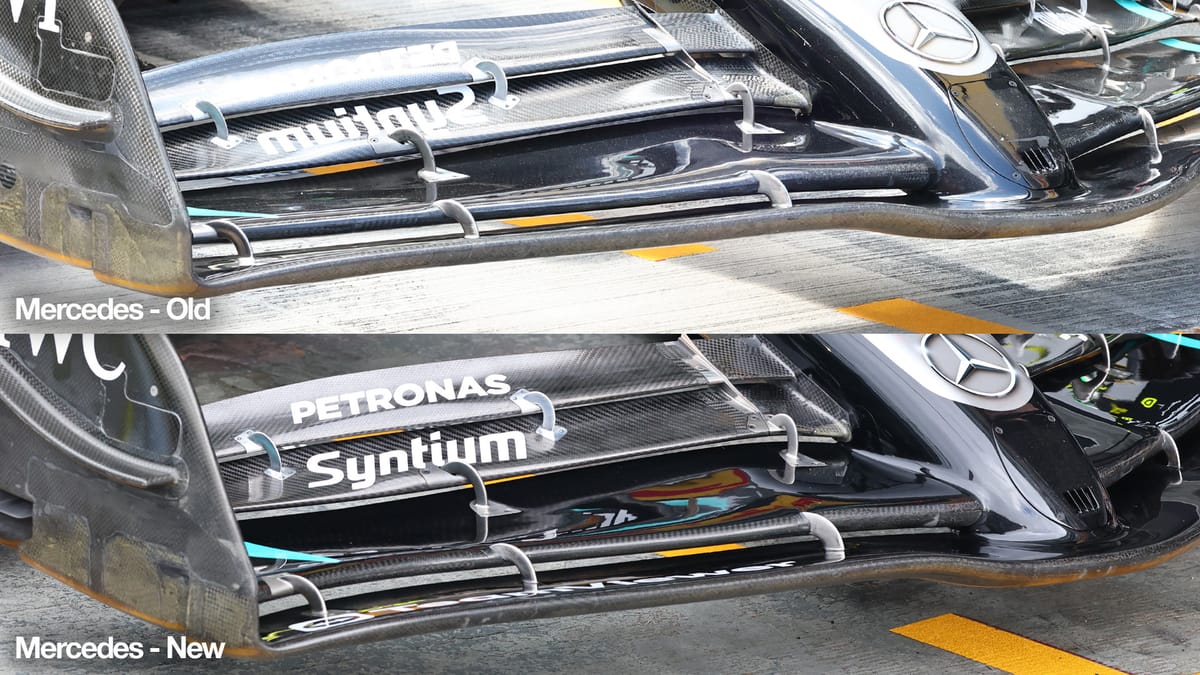Mercedes’ Singapore Grand Prix night race victory illuminated a Formula 1 technical scenario that’s been in the shadows in recent months: front-wing flexing.
There was little attention among fans on the new front wings both Mercedes and Red Bull brought to Singapore. Both teams have continued to introduce aerodynamic updates in this area over recent races, despite most resources now being redirected toward their 2026 cars.
Mercedes, in Belgium at the end of July, and Red Bull, in the Netherlands a month later, had already introduced specific front wing modifications to try to end the season on a high note.
The technical directives introduced at the Spanish Grand Prix four months ago were designed to limit wing flexing. It’s fair to assume that both Mercedes and Red Bull have been working on composite materials that allow flexing that’s within those tightened rules but limit the effects of the clampdown.
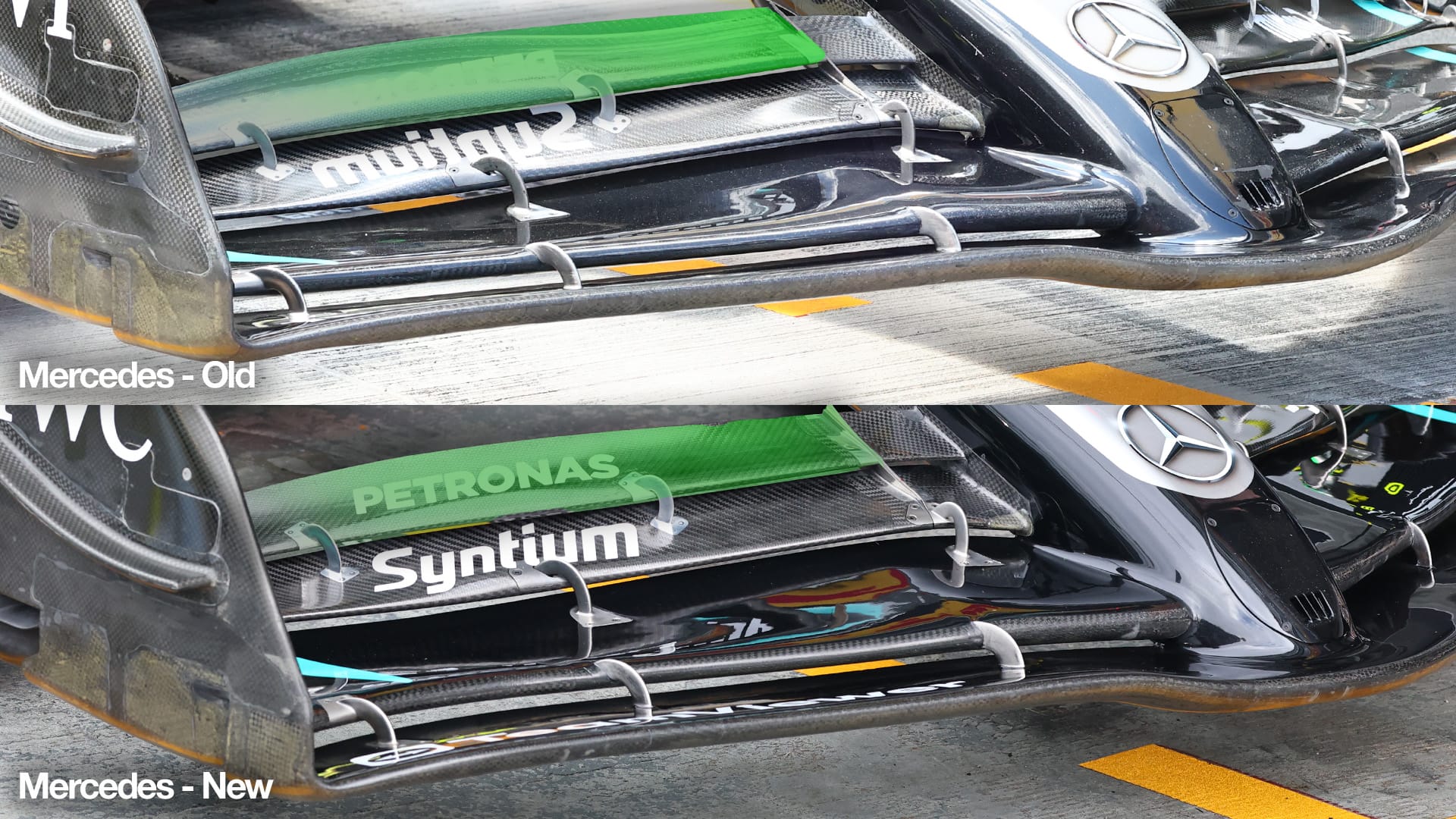
The wing introduced by Mercedes for Singapore was officially presented as an aerodynamic update – a barely visible one – to the upper flap, although onboard cameras clearly showed significant flexing.
From what we understand, the Mercedes engineers have successfully continued their work on front-wing flexibility, focusing specifically on the flap, which, since the Spanish Grand Prix, cannot flex more than 3mm under a perpendicular load of 60N.
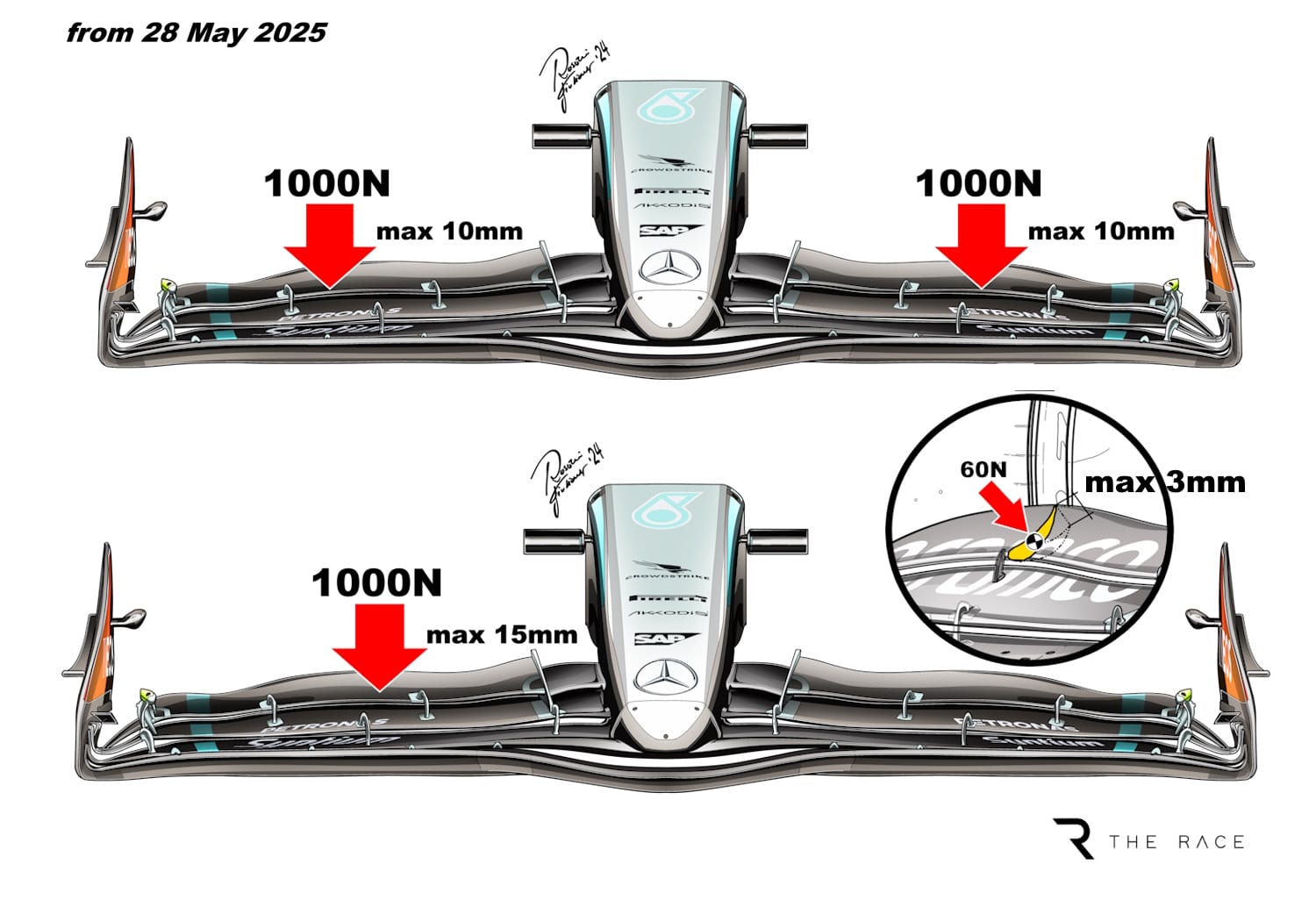
In parallel, Red Bull brought to Singapore a new front-wing specification, the result of continuous aerodynamic development aimed at reducing understeer on the RB21. However, it also appears to be part of an effort to make the wing flex strategically under certain loads.
The new front wing, designed in Milton Keynes and used exclusively by Max Verstappen in Singapore, features a different positioning of the hooks, which serve a key structural purpose for the elements.
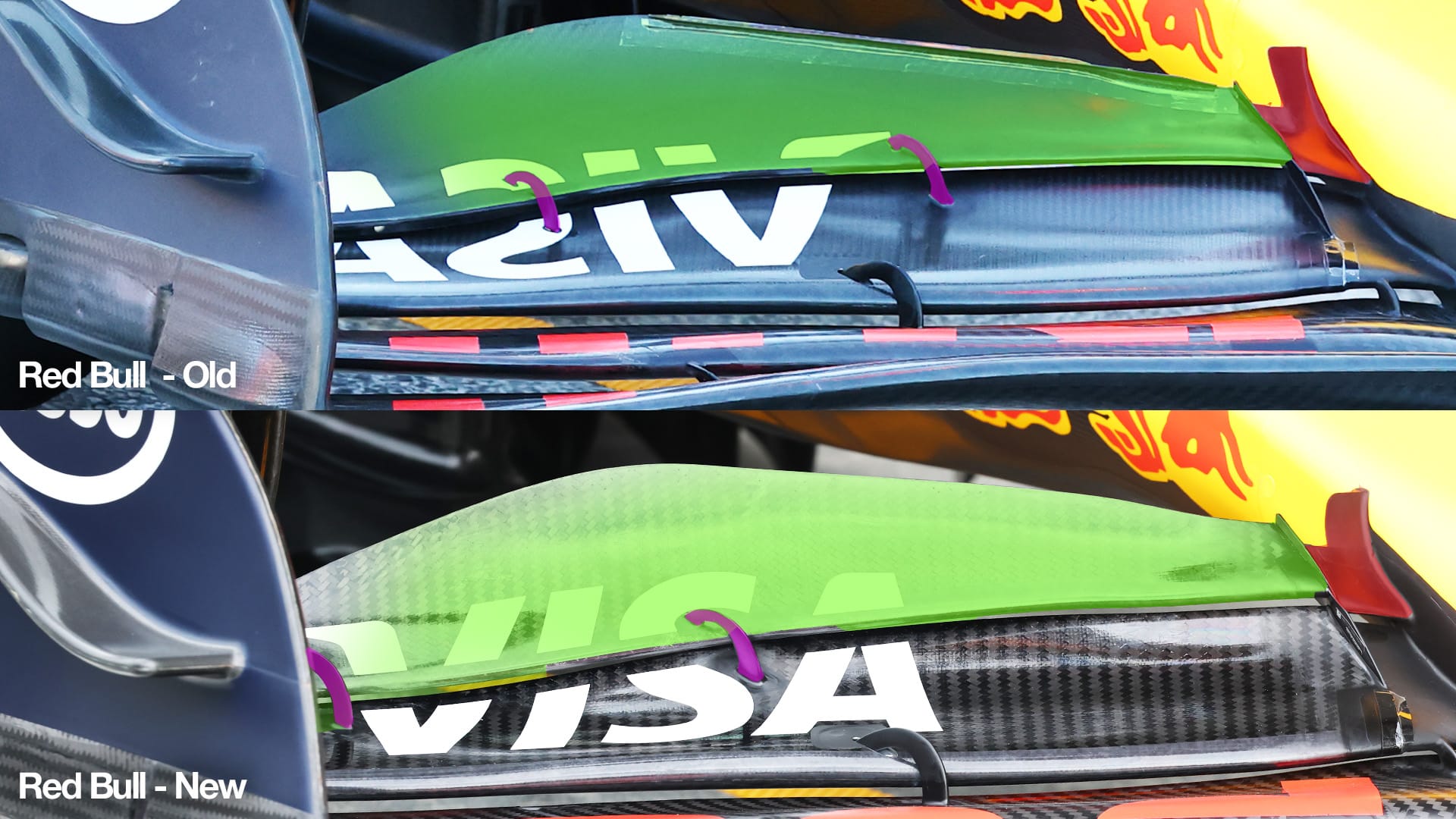
The real secret behind these cars has always been the controlled flexing of the front wing, which allows for optimal set-ups without sacrificing straightline efficiency.
Circumventing the constraints of technical directive TD018 is not a simple task, but the teams have had time to first comply with the directive ahead of the Spanish GP, and later to work on materials to regain a level of aeroelasticity advantageous enough to pass FIA inspections.
Mercedes, since spring, is believed to have worked on introducing a front wing capable of replicating pre-Spain flex levels, this time by focusing primarily on the flap rather than the entire wing body – mainly due to cost and time limitations, as the 2026 car has already been in the windtunnel since early summer.
Where Ferrari’s got stuck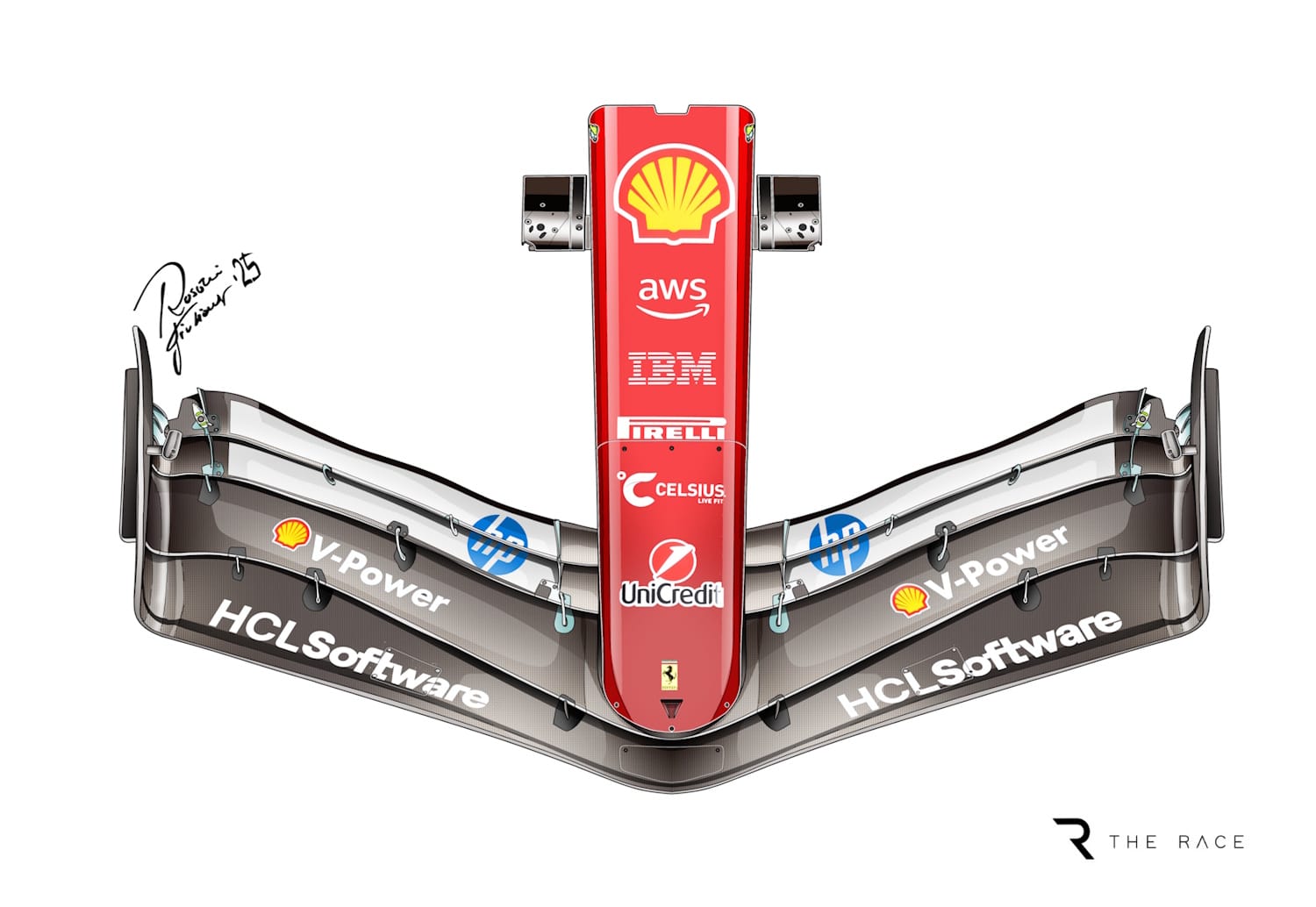
But the situation at Ferrari is far less encouraging.
In Azerbaijan last month, the team lost second place in the constructors’ championship standings, and Singapore proved to be another disappointing weekend of running far from the top.
There are now several warning signs suggesting that the Ferrari SF-25 has stagnated, unexpectedly overtaken by Mercedes and Red Bull, who have managed to improve despite already having one eye on 2026.
Our information indicates that, following the introduction of TD018, Ferrari has not continued development of the front wing, abandoning efforts on controlled flexibility.
As a result, the SF-25’s wing has remained largely unchanged since the version introduced in Spain, while the team redirected its remaining development resources toward the rear suspension introduced in Belgium in July.
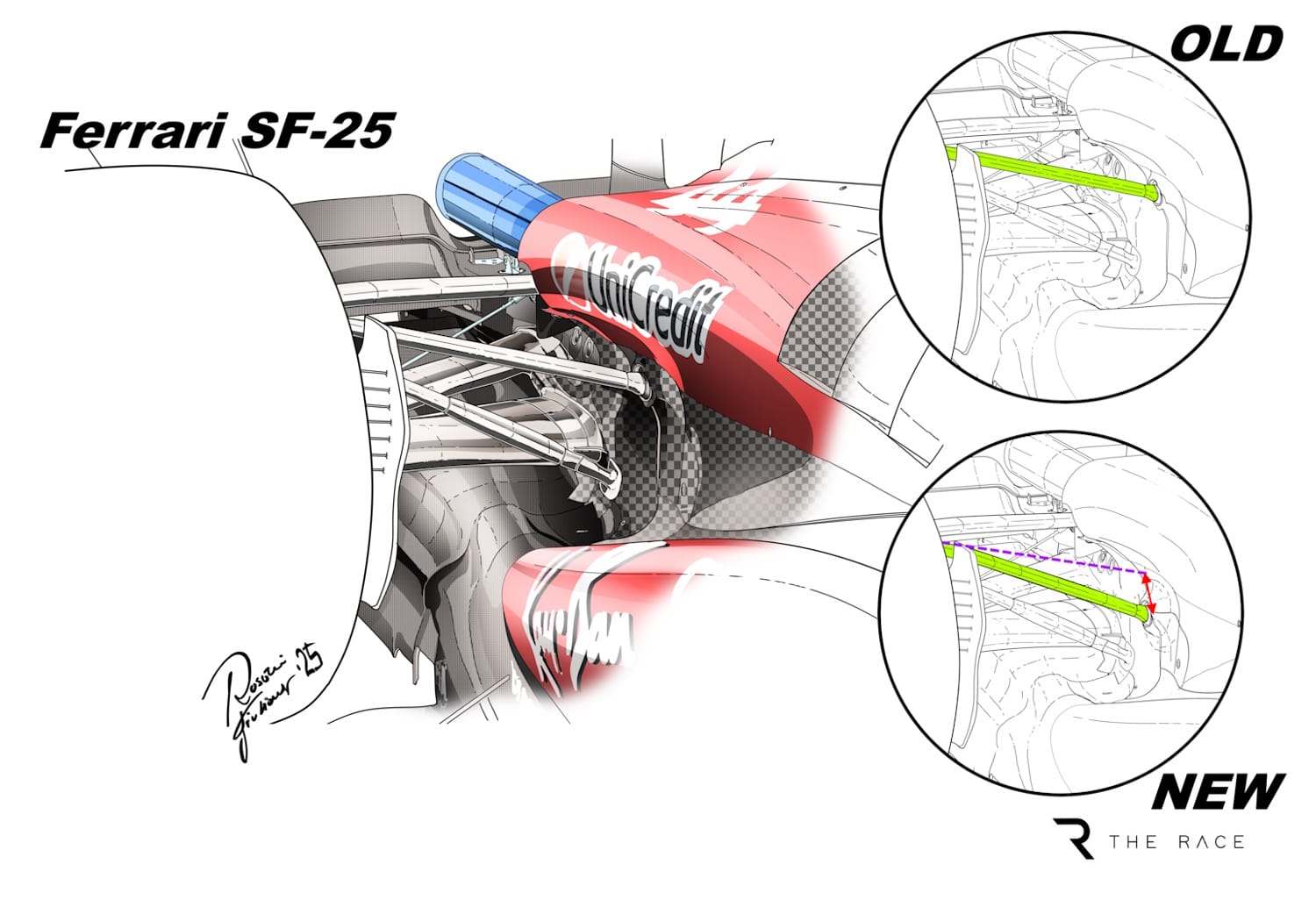
That suspension change was expected to improve driver confidence and braking stability, but data shows it has brought no measurable gains.
Chassis technical director Loic Serra and team boss Fred Vasseur reportedly approved the decision to focus the team’s remaining efforts solely on the rear suspension, shelving larger aerodynamic updates such as a new floor – initially planned for Baku – proposed by Diego Tondi’s aerodynamics department.
McLaren has also deliberately chosen to halt development on the front wing and structural flexing, confident in its comfortable lead in the standings.
Inside Ferrari, disappointment is evident, as the suspension update has failed to produce performance gains and has even limited aerodynamic development.
The suspension has not made the car worse, but it hasn’t made it better either.
Nonetheless, Ferrari will not revert to an old suspension layout, as Mercedes did earlier this year, but the reality is that the SF-25 has plateaued, and the package appears to have reached its performance ceiling.
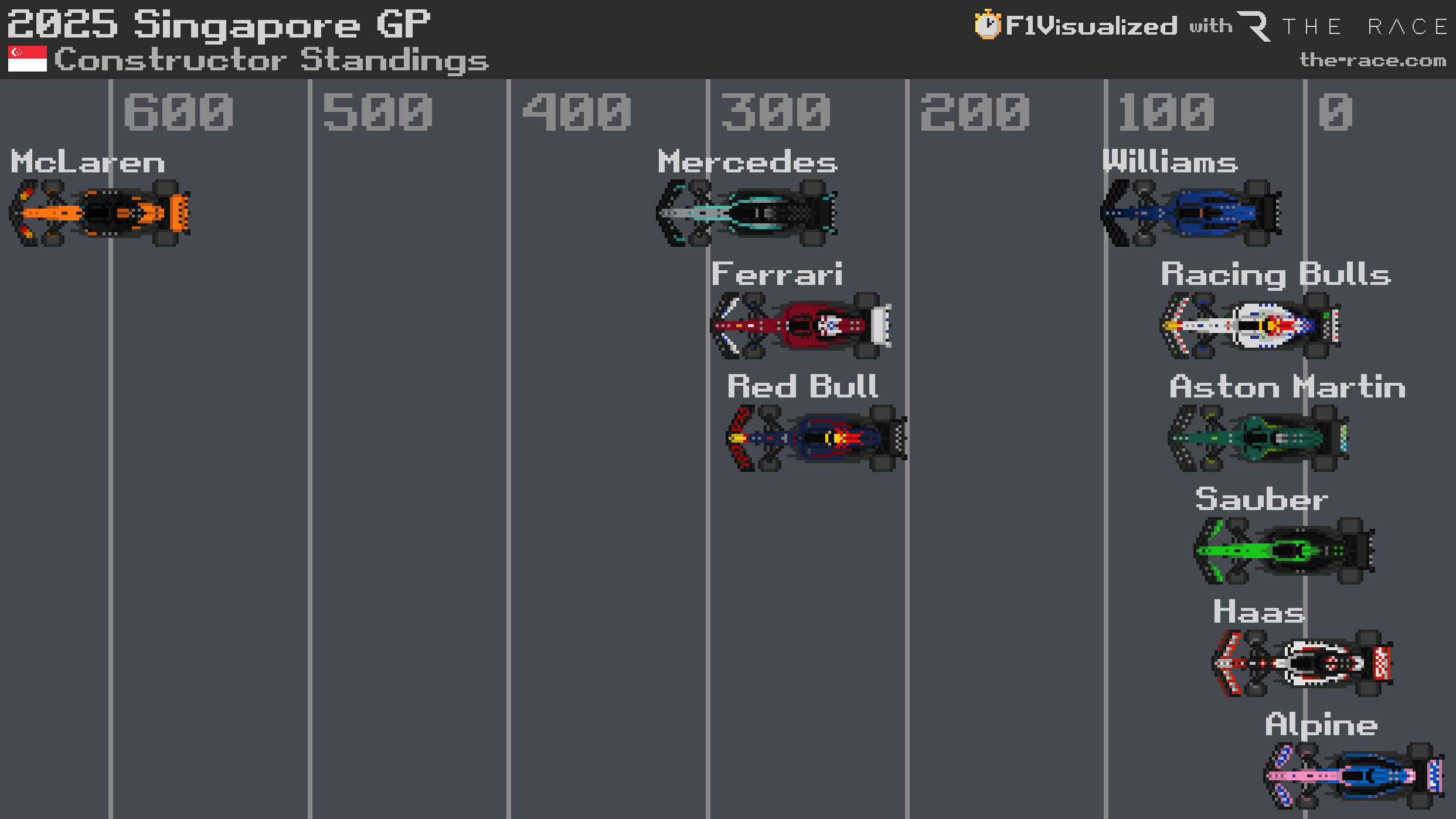
In short, while Red Bull and Mercedes have focused their remaining resources on aerodynamics and flexing, Ferrari has invested in an area with limited returns — a decision that risks compromising the end of its season.
Even third place in the constructors’ championship is now far from guaranteed.

